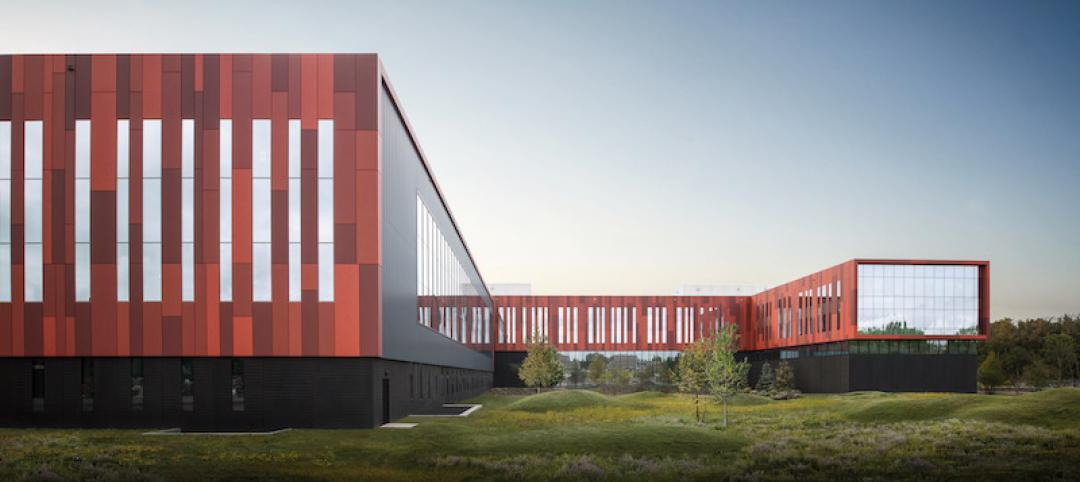As coastal flooding becomes the "new normal," many shoreline cities are trying to find long-term strategies to cope with extreme weather events. In order to advance understanding of this issue, The Boston Harbor Association teamed up with Sasaki Associates to produce Preparing for the Rising Tide, a series of reports focusing on Boston and rising sea levels.
Volume Two of this series was published in August 2014, and focuses on Designing with Water for flood management. According to the report, this school of thought "considers coastal flooding not only a threat, but an opportunity to address multiple goals while making necessary new investments in our buildings, communities, and infrastructure."
The new report contains 12 case studies of cities around the world that have applied advanced flood management techniques. In these case studies, five key design principles emerged:
1. Design for resilience. Resilience implies adapting to or bouncing back from a disturbance quickly. Resilient planning and design incorporates redundancy and anticipates change over time.
2. Create double-duty solutions. Double-duty solutions provide multiple benefits to maximize economic, ecologic, and cultural gain.
3. Strengthen community resilience. Community resilience maintains and enhances the cultural identity that defines a city through resiliency networks and social support systems. Strategies that strengthen social resilience can both cost less and provide meaningful benefits to participants.
4. Incentivize and institutionalize preparedness. Citywide and regional adaptation plans are necessary to guide resiliency efforts. Insurance standards, zoning laws, construction codes, and policy are tools that local and state governments should consider to encourage adaptation within their communities.
5. Phase plans over time. Designing with Water requires design and planning for flexibility and adaptability over time. Planning efforts that address sea level rise should be phased and have the ability to change based on external conditions.
The report concludes with recommended courses of action for members of both the private and public sectors. Here are some of the recommendations that we found particularly interesting:
Recommendations for the Private Sector:
-
Create time-phased preparedness plans based on environmental triggers such as sea level or storm intensity to maintain or even reduce risk of flood damage over time. Incorporate flood preparedness into capital maintenance schedules to minimize additional costs.
-
Look for opportunities to combine flood control with other business and institutional goals such as energy efficiency, sustainability, and livability. Coordinate such strategies with neighboring properties to provide more effective, less costly solutions.
-
Develop and teach curricula focused on Designing with Water and other flood preparedness concepts. Local design schools could be a resource.
Recommendations for the Public Sector:
-
In order to limit costly delays, dead-end investments, and exacerbated social inequalities, we strongly recommend the city of Boston and surrounding communities develop a phased master plan that protects our people and places over time as the tide rises.
-
Work with surrounding municipalities—especially those closely connected through transportation, power, water, and sewage—to develop the political will, regional planning, and resources needed to prepare for chronic coastal flooding.
-
Secure significant new public and private investment to implement the master plan and accelerate private actions. Identify an appropriate coordinating body to manage these resources most effectively to address multiple goals.
Read the full report here.
Related Stories
| Aug 15, 2016
Top 50 Sports Facility Architecture Firms
Populous, HKS, and HOK top Building Design+Construction’s annual ranking of the nation’s largest sports facility sector architecture and A/E firms, as reported in the 2016 Giants 300 Report.
| Aug 15, 2016
MILITARY GIANTS: Cross-laminated timber construction gets a salute from the Army
By privatizing the construction, renovation, operation, maintenance, and ownership of its hotels the Army expects to cut a 20-year timetable for repairs and replacement of its lodging down to eight years.
| Aug 15, 2016
Top 30 Military Architecture Firms
HDR, Clark Nexsen, and Guernsey top Building Design+Construction’s annual ranking of the nation’s largest military sector architecture and A/E firms, as reported in the 2016 Giants 300 Report.
| Aug 12, 2016
SCIENCE + TECHNOLOGY GIANTS: Incubator model is reimagining research and lab design
Interdisciplinary interaction is a common theme among many new science and technology offices.
| Aug 12, 2016
Top 40 Science + Technology Architecture Firms
Perkins+Will, HDR, and HOK top Building Design+Construction’s annual ranking of the nation’s largest science + technology sector architecture and A/E firms, as reported in the 2016 Giants 300 Report.
| Aug 12, 2016
OFFICE GIANTS: Technology is giving office workers the chance to play musical chairs
Technology is redefining how offices function and is particularly salient in the growing trend of "hoteling" and "hot seating" or "free addressing."
| Aug 12, 2016
Top 100 Office Architecture Firms
Gensler, HOK, and Perkins+Will top Building Design+Construction’s annual ranking of the nation’s largest office sector architecture and A/E firms, as reported in the 2016 Giants 300 Report.
| Aug 11, 2016
RETAIL GIANTS: Retailers and developers mix it up to stay relevant with shoppers
Retail is becoming closely aligned with entertainment, and malls that can be repositioned as lifestyle centers will have enhanced value.
| Aug 10, 2016
Top 90 Retail Architecture Firms
Gensler, GreenbergFarrow, and MG2 top Building Design+Construction’s annual ranking of the nation’s largest retail sector architecture and A/E firms, as reported in the 2016 Giants 300 Report.
| Aug 10, 2016
DATA CENTER GIANTS: Information overload is pushing the limits of mission-critical facilities
Streamlined design and delivery approaches for individual business enterprises and co-location facilities are being born out of the necessity to bring new capacity online as quickly as possible.

















